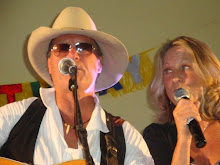The 2000 census reported 298,215 Navajo people living throughout the United States; 173,987 (58.34%) were within the Navajo Nation boundaries. More than 250,000 Navajos live on Navajo Land.
... There are 270,000 members, of which 165,614 live within the Navajo Nation borders. (Depending on the source I read, the population was different!) In any case, the Navajo Nation is recognized as the largest tribe in the United States. The land area of the reservation is 24,078.127 square miles (62,362.062 km²), making it by far the largest Indian reservation in the United States. Diné Bikéyah, or Navajoland, is larger than 10 of the 50 states in America. Like much of America, rural areas of the Navajo Nation are losing population. If this continues, by 2012 about half of the Navajo people will live outside the Navajo Nation.
A little history:
In January of 1864, President Andrew Jackson’s Indian Removal Act forced more than 8500 Navajo men, women and children to leave their ancestral land and to march for hundreds of miles (500 km). Some Navajos escaped and hid at Navajo Mountain, along the Little Colorado and Colorado Rivers. During the march, which is called The Long March of the Navajo, they were forced to leave their elderly and their young children behind to die. Traveling in harsh winter conditions for almost two months (some sources say 18 days), about 200 Navajo died of cold and starvation. The Navajo were led by the army to live on an area of 40 square miles (103.6 square kilometers), called Bosque Redondo in eastern Arizona territory and in New Mexico territory. Bosque Redondo was a miserable failure, because of poor planning, disease, crop infestation and generally poor conditions for agriculture. Many Navajos died there.
On June 18, 1868, the once-scattered bands of people who called themselves Diné, set off together on the return journey, the "Long Walk" home. This is one of the few times where the U.S. government relocated a tribe to their traditional boundaries. The Navajos were granted 3.5 million acres (14,000 km²) of land inside their four sacred mountains. The Navajos also became a more cohesive tribe after the Long Walk and were able to successfully increase the size of their reservation since then, to over 16 million acres (70,000 km²).
http://www.youtube.com/watch?v=7_YZRS_604o&feature=related
(A Navajo woman tells the story of The Long Walk.)
http://www.viewzone.com/day3w.html
(The Long Walk)
Jane
For vocabulary go to http://www.thefreedictionary.com/
OR http://www.wordreference.com/
Jane
For vocabulary go to http://www.thefreedictionary.com/
OR http://www.wordreference.com/

No comments:
Post a Comment